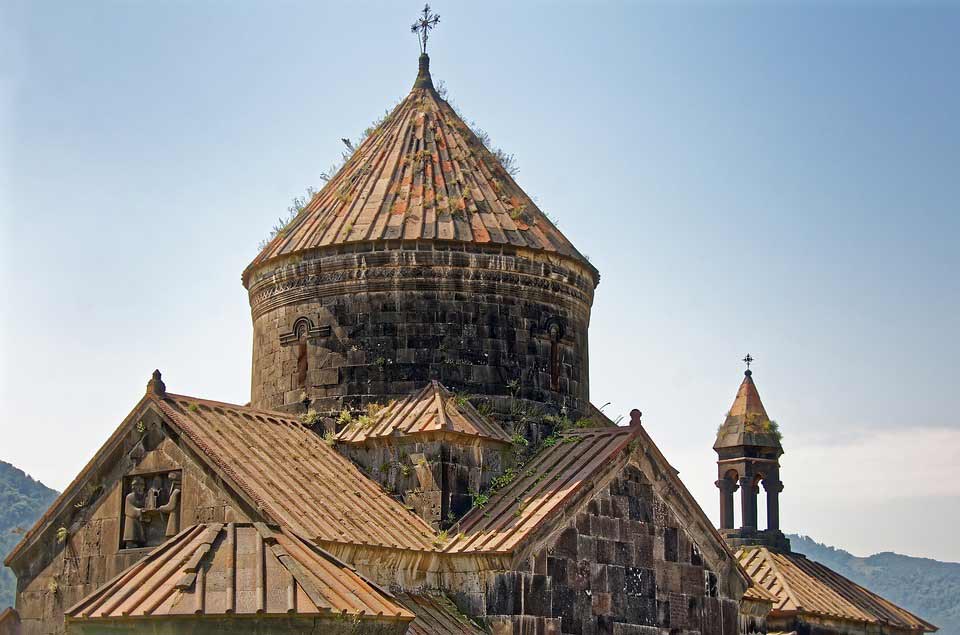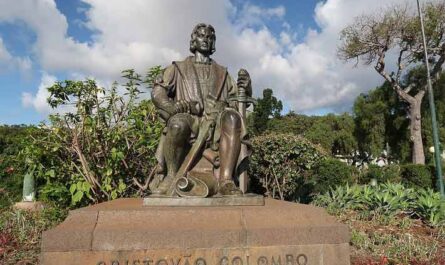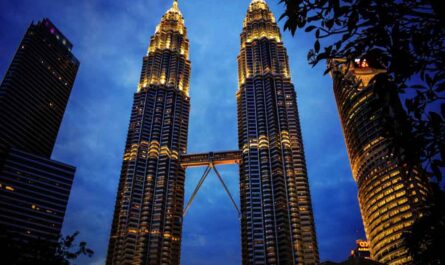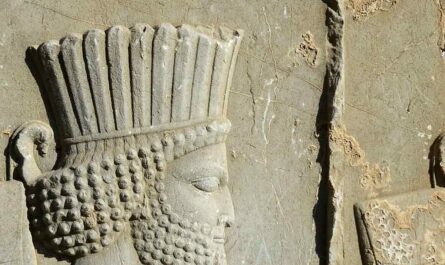There are a lot of interesting facts about Armenia. At the heart of Armenia’s story lies its vibrant capital, Yerevan. This bustling metropolis is more than just a city; it is a living testament to Armenia’s resilience and creativity. Here, ancient history mingles with modernity, as centuries-old churches stand alongside sleek skyscrapers. The streets buzz with activity, as locals and visitors alike explore the city’s markets, cafes, and cultural landmarks. This article will feature many more interesting cool fun facts about Armenia. Keep reading.
Interesting Facts about Armenia
From the iconic Cascade complex to the bustling Republic Square, Yerevan pulsates with energy and life, serving as both a gateway to Armenia’s past and a beacon of its future. In Yerevan, the spirit of Armenia finds its fullest expression, embodying the country’s rich heritage and dynamic present. Let’s learn below some interesting facts about Armenia!
1. A Century of Struggle for Independence
The road to independence for Armenia has been fraught with turmoil and strife, marked by moments of triumph and tragedy. On May 28, 1918, amidst the chaos of the crumbling Russian Empire, Armenia seized the opportunity to declare its independence, emerging as a sovereign nation after centuries of foreign rule. However, this newfound freedom was short-lived, as Armenia soon found itself under attack from both Turkish and Soviet forces in 1920, threatening its hard-won independence. Despite valiant resistance, Armenia was ultimately absorbed into the Soviet Union, becoming a constituent republic in 1936. For decades, Armenia remained under Soviet control, its aspirations for self-determination stifled by the iron grip of communist rule.
2. From Soviet Satellites to Sovereignty
The dawn of the 1990s brought winds of change to Armenia, as the Soviet Union began to unravel at the seams. On August 23, 1990, Armenia took a bold step towards reclaiming its independence, proclaiming itself a sovereign state and paving the way for a new era of self-governance. This declaration of statehood was followed by a decisive vote for independence on September 23, 1991, solidifying Armenia’s status as an independent nation on the world stage. After decades of subjugation and struggle, Armenia had finally regained its rightful place among the community of nations, ready to chart its course toward a brighter future.
3. The Thorny Issue of Nagorno-Karabakh
Yet, even as Armenia celebrated its newfound freedom, it found itself embroiled in a bitter conflict with its neighbor, Azerbaijan, over the disputed territory of Nagorno-Karabakh. This enclave, known to Armenians as Artsakh, had long been home to a predominantly Armenian population but found itself under Azerbaijani rule following the collapse of the Soviet Union.
Tensions simmered for years before erupting into open warfare in 1988, as both sides vied for control over this strategically significant region. By the mid-1990s, Karabakh Armenian forces had managed to seize much of southern Azerbaijan, but their gains proved fleeting. In 2020, a devastating battle forced them to retreat, leaving Nagorno-Karabakh once again in the hands of Azerbaijani forces. The conflict remains unresolved, casting a shadow over Armenia’s quest for peace and stability in the region.
4. Armenia: A Cultural Crossroads
Armenia occupies a unique position on the geopolitical map, straddling the line between Europe and Asia. While its cultural, historical, and political ties to Europe are undeniable, thanks to centuries of interaction and exchange, its location in the southern Caucasus also lends it a transcontinental identity. This dual heritage has shaped Armenia into a cultural crossroads, where Eastern and Western influences converge to create a rich tapestry of traditions and beliefs. From its ancient churches adorned with intricate carvings to its bustling markets filled with goods from far-flung lands, Armenia stands as a testament to the power of diversity and dialogue.
5. The Legacy of Conquest
The story of Armenia’s territorial evolution is one marked by conquest and conflict. In the aftermath of the Russo-Persian War of 1826–28, Armenia found itself caught in the crossfire as Russia and Persia vied for dominance in the region. The signing of the Treaty of Turkmenchay in 1828 sealed Armenia’s fate, bringing a significant portion of its territory under Russian control. This power shift not only altered the course of Armenian history but also laid the groundwork for the modern-day boundaries of the nation. The echoes of this turbulent period continue to reverberate through Armenian society, shaping its identity and sense of national pride.
6. The Journey to Independence
The collapse of the Soviet Union in 1991 marked a turning point in Armenia’s history, as the nation emerged from decades of communist rule to reclaim its independence. The birth of the Republic of Armenia heralded a new era of self-determination and sovereignty, as the Armenian people embarked on the challenging journey of nation-building. Despite facing numerous obstacles along the way, including economic hardship and political instability, Armenia has made significant strides towards development and progress.
With a Human Development Index ranking of 81 in 2018, Armenia is classified as a developing nation, striving to improve the quality of life for its citizens and carve out a place for itself on the global stage. Central to Armenia’s economic landscape is its focus on manufacturing and mineral exploitation, leveraging its natural resources to drive growth and prosperity. As Armenia continues to navigate the complexities of the modern world, its resilience and determination serve as a testament to the indomitable spirit of its people.
7. Armenia: A Jewel of Transcaucasia
Nestled amidst the towering peaks of the Caucasus mountain range, Armenia stands as a jewel of Transcaucasia, a region rich in history and natural beauty. Situated on Asia’s northern border, Armenia boasts a diverse landscape that ranges from verdant valleys to rugged mountain ranges. To the north and east, Armenia shares borders with its neighbors Georgia and Azerbaijan, while to the southeast and west, it is flanked by Iran and Turkey respectively. This strategic location has not only shaped Armenia’s cultural identity but also made it a gateway between East and West, fostering a vibrant exchange of ideas and traditions over the centuries.
8. Battling Poverty: A Socioeconomic Challenge
Despite its rich cultural heritage and natural resources, Armenia grapples with the scourge of poverty, with a significant portion of its population living below the national poverty level. In 2019, approximately 26.4 percent of Armenians found themselves struggling to make ends meet, highlighting the persistent socioeconomic challenges facing the nation. Furthermore, the plight of the working poor remains a pressing issue, with 0.3 percent of employed individuals earning less than $1.90 per day, underscoring the need for targeted interventions to uplift the most vulnerable segments of society. Addressing poverty and promoting inclusive economic growth are central to Armenia’s development agenda, as the nation strives to build a brighter future for all its citizens.
9. The Ancient Roots of Armenian Culture
The Armenian people trace their origins to an ancient culture that flourished in the region known as Armenia, encompassing present-day northeastern Turkey and the Republic of Armenia. Referred to as Armenians or Hay in their native tongue, these individuals are the descendants of a storied civilization with a rich heritage spanning millennia. From their humble beginnings as agrarian societies to their emergence as sophisticated urban centers, the Armenians have left an indelible mark on the tapestry of human history. Despite the challenges of displacement and diaspora, the Armenian people continue to cherish their cultural identity, preserving their traditions and language for future generations to inherit. As custodians of a proud legacy, Armenians remain steadfast in their commitment to preserving their heritage and honoring the sacrifices of their ancestors.
10. The Birth of Christianity in Armenia
Legend has it that the apostles Bartholomew and Thaddeus were instrumental in spreading Christianity to Armenia, laying the foundations for what would become a deeply ingrained aspect of Armenian identity. However, it was the conversion of King Tiridates III, orchestrated by the revered St. Gregory the Illuminator in 300 CE, that marked a pivotal moment in Armenian history. With the monarch’s embrace of Christianity, Armenia earned the distinction of being the first nation to officially adopt the faith, a testament to the enduring legacy of its early evangelizers. This momentous event not only transformed Armenia’s religious landscape but also cemented its place in the annals of Christian history.
11. A Haven for Families: Quality of Life in Armenia
Beyond its picturesque landscapes and rich cultural heritage, Armenia offers a compelling blend of safety, affordability, and quality of life, making it an attractive destination for families seeking a nurturing environment to call home. One of its most appealing features is its provision of free schooling and a robust public healthcare system, ensuring that essential services are accessible to all citizens. While private education may come at a cost, it remains significantly more affordable compared to many other countries, making quality education attainable for a broader segment of the population. Additionally, the widespread teaching of English as a second language in schools enhances opportunities for international communication and collaboration, further enriching the educational experience for students.

12. Armenia’s Geopolitical Identity
Geographically, Armenia straddles the boundaries of three distinct regions: the Middle East, Asia Minor, and Eastern Europe, reflecting its complex geopolitical identity shaped by centuries of historical and cultural influences. During the Soviet era, Armenia existed as the Armenian Soviet Socialist Republic, a constituent republic within the larger framework of the USSR. Despite its location in the Middle East, Armenia’s religious landscape more closely resembles that of Europe, characterized by a strong Christian tradition and a rich tapestry of religious expression. This intricate interplay of geographical, political, and cultural factors underscores Armenia’s position as a dynamic and multifaceted nation, poised at the crossroads of civilizations.
13. The Varied Spellings of Yerevan
Armenia’s capital city, Yerevan, is a place of many names, each reflecting its rich history and diverse cultural influences. Sometimes referred to as Erevan, Erivan, or Jerevan, the city’s various spellings offer a glimpse into its complex past and the multitude of languages that have left their mark on its identity. Located approximately 14 miles (23 kilometers) from the Turkish border, Yerevan sits gracefully on the banks of the Hrazdan River, adding to its allure as one of Armenia’s most captivating destinations. This unique blend of linguistic diversity and geographical charm is just one of the many fascinating facets of Armenia’s capital.
14. A New Chapter in EU-Armenia Relations
March 1, 2021, marked a significant milestone in the relationship between the European Union and Armenia with the entry into force of the Comprehensive and Enhanced Partnership Agreement (CEPA). Ratified by the Republic of Armenia, all EU Member States, and the European Parliament, this landmark agreement represents a watershed moment in the diplomatic ties between the two entities. CEPA promises to deepen cooperation and collaboration across a range of sectors, including trade, governance, and civil society, paving the way for closer integration and mutual benefit. As Armenia embarks on this new chapter of engagement with the European Union, it signals a commitment to shared values and aspirations for a more prosperous and stable future.
15. The Journey to Independence and Development
Amidst the tumult of the Soviet Union’s collapse in 1991, the Republic of Armenia emerged as an independent nation, reclaiming its sovereignty after decades of communist rule. Positioned as a developing nation with a Human Development Index (HDI) of 81 in 2018, Armenia faces both challenges and opportunities on its path toward progress. With an economy centered predominantly on manufacturing and mineral exploitation, Armenia harnesses its natural resources to drive growth and prosperity. However, the journey towards sustainable development requires concerted efforts to address socio-economic disparities and foster inclusive growth that benefits all segments of society. As Armenia navigates the complexities of the modern world, it does so with a determination to build a future defined by resilience, innovation, and prosperity for its citizens.
16. Economic Challenges and Poverty in Post-Soviet Armenia
Following the dissolution of the Soviet Union, Armenia, a landlocked country in Eastern Europe, embarked on a journey towards independence. However, this transition was not without its challenges, as the nation grappled with the complexities of building a new economic system amidst the remnants of a once-powerful empire. While Armenia witnessed a gradual decline in poverty rates, with a current poverty rate of 29.8 percent, the specter of poverty continues to loom large over many Armenian households.
The lack of job opportunities within the country, coupled with a persistently high unemployment rate and a struggling agricultural sector, serves as the primary driver of poverty in Armenia. Addressing these systemic issues requires sustained efforts to stimulate economic growth, create employment opportunities, and bolster key sectors of the economy.
17. Unraveling Historical Narratives: The Karduchoi and Corduene
Despite the similarities in names, historical evidence suggests that the Karduchoi were not synonymous with the Kurds, as certain documents and contemporary historians have noted. In addition to Corduene, which is often associated with the Kurds, the Kingdom of Armenia also exerted influence over Moxoene (known as Miks in Kurdish), a region now predominantly populated by Kurds and situated near present-day Bahçesaray. This nuanced understanding of historical narratives sheds light on the complex interactions between various ethnic groups and polities in the region, challenging simplistic interpretations and highlighting the intricate tapestry of cultural and political dynamics that have shaped the course of history in this region.
18. The Nagorno-Karabakh Conflict: A Tale of Ethnic and Territorial Strife
At the heart of the Nagorno-Karabakh conflict lies an enduring struggle between Armenia and Azerbaijan over the disputed region of Nagorno-Karabakh. Populated primarily by ethnic Armenians, Nagorno-Karabakh, along with seven surrounding districts, has been the focal point of ethnic and territorial disputes between the two nations. The First Nagorno-Karabakh War witnessed the evacuation of Azerbaijanis from these territories, further exacerbating tensions and entrenching divisions. As both Armenia and Azerbaijan continue to assert their claims over Nagorno-Karabakh, the conflict remains a potent symbol of unresolved grievances and territorial ambitions, posing significant challenges to regional stability and peace-building efforts.
19. Land Ownership for Foreign Companies in Armenia
Foreign companies registered in Armenia have the opportunity to acquire land, despite restrictions on land ownership for foreign individuals. While foreign individuals are not permitted to purchase land in Armenia outright, they can enter into long-term leasing agreements. This policy allows foreign companies to establish a presence in Armenia and utilize land for various purposes, contributing to economic development and investment in the country. RPM 3.0 – 60% CONVERSION & Money for Affiliate Marketing
20. Yerevan: The Heart of Armenia
Yerevan, Armenia’s capital and largest city, boasts a population of over one million people, making it the bustling epicenter of the country. As the administrative, cultural, and economic hub of Armenia, Yerevan plays a pivotal role in shaping the nation’s identity and trajectory. With its rich history, vibrant culture, and dynamic economy, Yerevan offers residents and visitors alike a plethora of opportunities and experiences, embodying the spirit and vitality of Armenia.
21. Notable Armenians: Icons of Achievement
Armenia has produced numerous notable figures who have made significant contributions to various fields. Among them are:
- Khachatur Abovyan, an esteemed author and intellectual.
- Vittoria Aganoor, a celebrated poet known for her lyrical prowess.
- Andre Agassi, a legendary tennis star revered for his athletic prowess and philanthropy.
- Ivan Aivazovsky, a renowned painter renowned for his captivating seascapes.
- Armen Alchian, a distinguished economist who founded the “UCLA Tradition” of economics.
- Brothers Abraham and Artyom Alikhanian, pioneering nuclear physicists who made groundbreaking discoveries in their field.
- Diana Apcar, a trailblazing diplomat who made history as the first female diplomat, breaking barriers and paving the way for future generations of women in diplomacy. These individuals exemplify the talent, innovation, and resilience of the Armenian people, leaving an indelible mark on their respective fields and inspiring generations to come.
Hopefully, you have enjoyed these interesting facts about Armenia!
More Interesting Facts and Articles
- 60 Interesting Facts about Kathmandu City Nepal
- 30 Interesting Facts About the Flag Of Scotland
- 15 Interesting Fun Facts – Everland Theme Park, South Korea
- 75 Awesome Washington DC USA Interesting Fun Facts
- 70 Archipelago Ibiza Spain Interesting Fun Facts Trivia
- 33 Gyeongbokgung Palace South Korea Interesting Fun Facts
- 29 Andaman and Nicobar Islands Interesting Fun Facts
- 40 Irish Saint Patrick’s Day Interesting Fun Facts
- 25 Interesting Fun Facts About Nami Island South Korea
- 89 Wonders of the World One Must See in Lifetime
- Cultural Wonders of the World – A Complete List
- 22 Pashupatinath Temple Nepal Interesting Fun Facts
- List of 54 Greatest Empires in Entire History Timeline
- 100 United Nations Facts – The UN Basic Facts for All
- 100 Plateau of Tibet Facts to Astonish You
- 200 Kazakhstan Fun Facts Everyone Should Know
- 125 Interesting Facts about Hungary You Must Enjoy
- 200 Interesting Facts about Poland for Travelers
- 200 Cool Facts about Germany to Surprise You
Tags
interesting facts about Armenia
Armenia interesting facts
Armenia fun facts
Armenis cool facts
Fun facts about Armenia
Cool facts about Armenia



